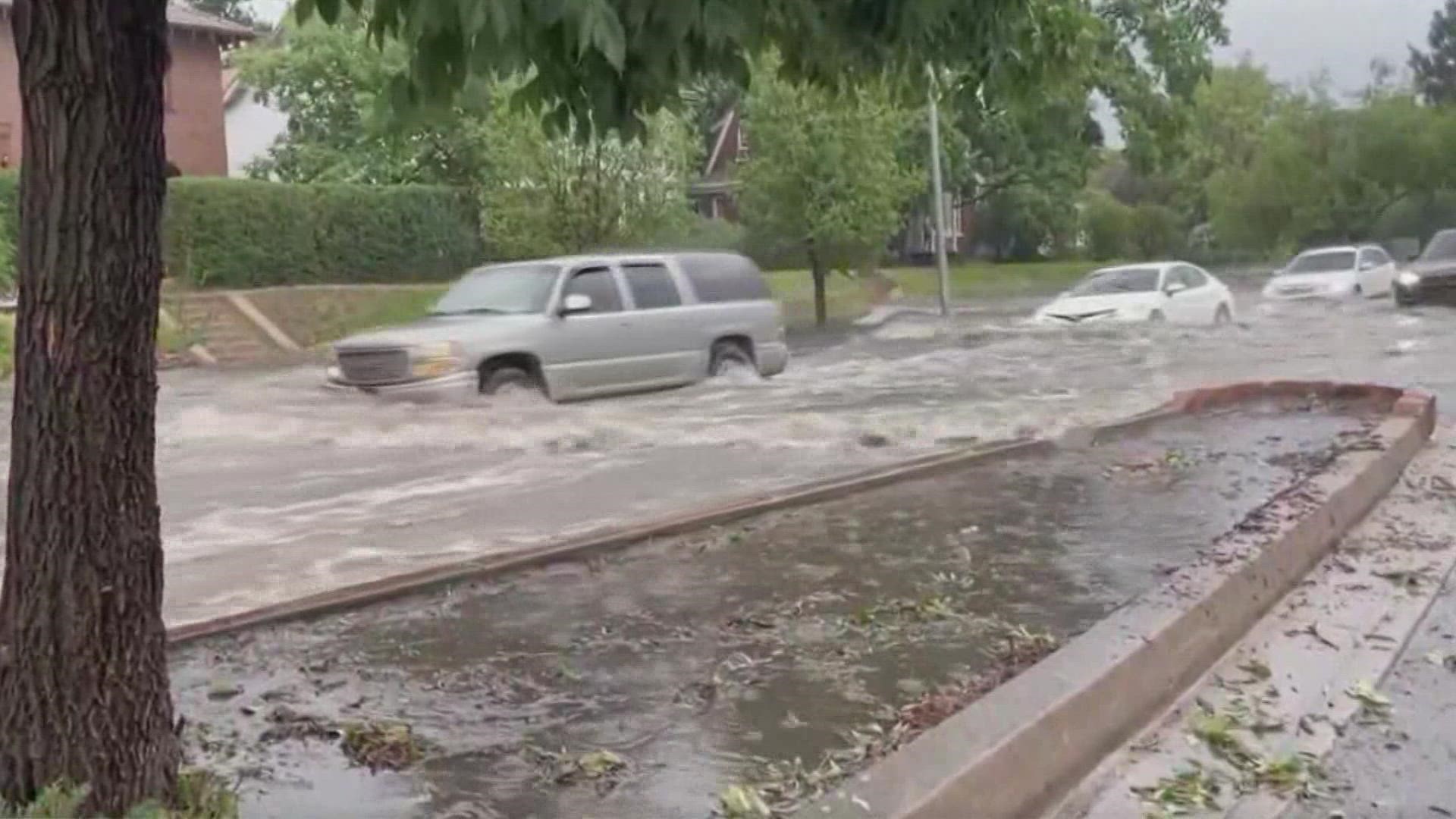LAFAYETTE, Colo. — A rain gauge in Broomfield measured 3.70 inches of rain on Tuesday morning. Of that, 3.32 inches fell in just two hours. That's a 200-year storm event for that area.
On Monday evening, 2.64 inches of rain was measured in southeast Aurora.
And yet the stormwater drained quicker in those two instances (with the exception of an incident at Parker and Quincy where rocks from a sidewalk clogged a storm drain), than it did in Denver on Aug. 7, when 1.92 inches fell over the city.
Granted, the Denver storm did drop the rain at a faster rate -- 1.30 inches in 15 minutes. But the difference in infrastructure between Denver and the surrounding areas also makes a big difference.
"Denver built itself into a situation, especially in some of the older neighborhoods, where there's an old natural stream channel now buried in a small pipe," said Bruce Uhernik, an engineer with the City of Denver.
Uhernik said while Denver blossomed into a booming city over the past 100 years, the stormwater infrastructure under it was left outdated. He said many of the storm pipes are way too small to do the job we are now asking them to do.
The small pipes mean the water on the streets will be slow to drain. Many people don't realize that the streets are actually part of the drainage system.
“We want the pipes underground to carry as much as they need to, and then allow the streets to carry six inches in the minor storms, and up to a foot in the major storms," Uhernik said.
He said the main goal of the entire drainage system is to protect homes and businesses from getting flooded by stormwater.
The bigger trouble comes when the water overtops the curbs, which in Denver can happen with any storm heavier than 1 inch of rain in one hour.
Other cities in the metro area can typically handle more water.
The streets in Broomfield drained much faster during Tuesday morning's downpour compared to Denver’s rainstorm last Sunday. It’s not that the streets are any different in Broomfield, but the pipes under the streets are bigger.
Another advantage that the suburbs and the younger cities around Denver have is more open channels.
Uhernik said open channels can carry more than four times the water than the pipes under the city of Denver can, but there is very little room in the city to make such a drastic change to the existing infrastructure.
The recently-completed Platte to Park Hill project did accomplish that conversion. Uhernik said Montclair Creek was covered up years ago to make room for a sprawling city. Engineers at the time decided to build it a pipe to travel through underground.
That decision ultimately created a nasty flooding problem that plagued some of the older neighborhoods like Cole, Whittier, Swansea, Elyria and Globeville every time it rained heavily.
In 2019, the city unearthed old Montclair Creek and freed it from the brick pipe that had contained it for nearly a century. Stormwater now flows there through an open channel that utilized City Park Golf Course and a massive culvert near the old McNichols Arena.
Uhernik said if he had a blank check, he would open up more stream channels that are unnaturally buried under the city, and upgrade every single storm pipe.
“It is a bit of a pipe dream, no pun intended. Just because of the cost,” he said. "It comes down to deciding how much flood risk are we willing to live with at the price we are willing to spend."
He said with the rising cost of construction materials, there is probably $2-3 billion of pipes that need to be upgraded in the city, and he only has $20-30 million to spend each year.
SUGGESTED VIDEOS: Colorado Climate

